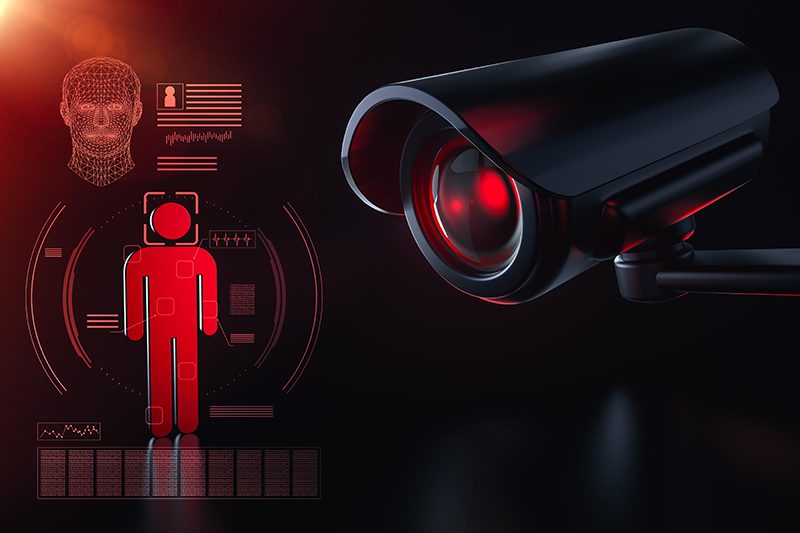You live in a time where cameras for watching are everywhere, from the places you all frequent to the homes you live in, and this helps to keep you safe. Yet, as cameras are all over, you face a hard question about how to keep both privacy and safety doing this is tough but tough but important to think about how to solve it. This writes about that thick situation. It details a lot that needs thought and ways to maybe fix it.
The Rise of Surveillance Technology
The evolution of surveillance technology has been nothing short of revolutionary. In the past, surveillance cameras were bulky and conspicuous, limited to specific use cases. Today, however, they have become smaller, more powerful, and incredibly versatile. The proliferation of high-definition cameras, coupled with advancements in artificial intelligence, has transformed surveillance into a sophisticated and pervasive system.
Enhancing Security
You can’t ignore how much security cameras help keep places safe. – They stop crimes in public spaces by scaring off wrongdoers and give cops important proof when things go bad. – Stores use them to prevent stealing and to keep buyers and workers safe. – These camera systems let you watch what’s happening live, which means people can act fast if there’s trouble. – Quick action could save someone’s life.
The Dark Side of Surveillance
Despite the evident benefits, the widespread use of surveillance cameras raises significant concerns about privacy infringement. Individuals find themselves under constant observation, eroding the sense of personal space. In public areas, the line between necessary monitoring for security and unwarranted intrusion into private lives becomes increasingly blurred. The potential misuse of surveillance data and the risk of unauthorized access further compound these concerns.
Ethical Considerations in Surveillance
The ethical implications of surveillance technology cannot be overlooked. The power dynamic between those monitoring and those being monitored can lead to abuses if not properly regulated. Questions about consent, data ownership, and the right to privacy come to the forefront. Striking the right balance requires careful consideration of the ethical framework governing the deployment and use of surveillance cameras.
Regulatory Challenges
The regulatory landscape for surveillance cameras is complex and varies widely across jurisdictions. While some regions have stringent regulations in place to safeguard privacy, others lack comprehensive frameworks. This lack of uniformity poses challenges for individuals, businesses, and law enforcement agencies, creating a fragmented approach to surveillance governance.
The Need for Transparent Policies
To address the dilemma of balancing security and privacy, there is a pressing need for transparent and robust policies governing the use of surveillance cameras. Clear guidelines on data retention, access controls, and the purpose of surveillance must be established. Furthermore, public discourse and stakeholder engagement are crucial to developing policies that reflect the values and expectations of the community.
Technological Safeguards
Advancements in technology can also be harnessed to strike a balance between security and privacy. Innovations such as anonymization algorithms, facial recognition limitations, and secure data storage solutions can mitigate the risks associated with surveillance. Integrating these safeguards into surveillance systems can enhance their effectiveness while respecting individual privacy rights.
Community Empowerment and Education
Empowering communities through education is an essential aspect of addressing the surveillance dilemma. Public awareness campaigns can inform individuals about the purpose and scope of surveillance initiatives, Embrace eSIM for Enhanced Travel Access ,fostering a better understanding of the trade-offs between security and privacy. Informed citizens are more likely to actively engage in discussions about surveillance policies and advocate for measures that align with their values.
The Future Landscape of Surveillance
As technology continues to advance, the future landscape of surveillance cameras is likely to undergo further transformation. Innovations in machine learning, edge computing, and biometrics will introduce new capabilities and challenges. It is imperative that the regulatory framework evolves in tandem, adapting to the changing technological landscape while upholding the principles of privacy and security.
Conclusion
The dilemma of surveillance cameras encapsulates the broader challenge of balancing security and privacy in our technologically driven society. As these devices become more ingrained in our daily lives, it is crucial to navigate the ethical, legal, and technological complexities to ensure a harmonious coexistence. By fostering transparent policies, embracing technological safeguards, and empowering communities through education, we can strive to achieve a delicate equilibrium in the surveillance age. Balancing security and privacy: This is the ongoing dilemma that requires collective efforts and thoughtful considerations to safeguard our societies without compromising our fundamental right to privacy.

